(Roger Vivier photographed by George Brassaï)
.
Biography
.
Roger Vivier is born in Paris, on 13 November 1907. At the age of 9 his parents die and Roger is adopted by Gérard Benoit-Vivier. In 1925 he enrolls in the Ecole des Beaus-Arts, hoping to become a sculptor. When a family friend gives him a job at a shoe factory outside of Paris, where he learns the ins and outs of shoe design, Roger realizes he can make sculptures to be worn. After he finished his job at the shoe factory Roger decides he prefers to learn all aspects of the trade by working in several other factories too and ends his study at art school. This ‘shoe-study’ takes him nine years.
.
In 1936 he takes on an offer of Laboremus, a leather distribution firm, the French arm of a large German tannery. He is responsable for predicting trends, advising on which color skins will sell best. At night he is sketching shoes he could make of these colorful skins.
.
A year later he opens his first workshop in rue Royale, one of the most prestigious addresses in Paris, carrying exclusive models for private clientele, including Josephine Baker and Mistinguett. A photograph by George Brassaï stirs interest within the profession and Roger begins to collaborate with wold’s greatest shoe manufactures, designing shoes for Pinet and Bally in France, Salamander and Mercedes in Germany, Rayne and Turner in England, Miller and Delman in the United States. His revolutionary cork-platform design is rejected by Delman, but Elsa Schiaparelli picks it up and includes it in her 1938 collection.
Josephine Baker
Dancer and actress Mistinguett
.
Just before WWII, Roger takes the last train out of Spain and embarks from Lisbon on the Exeter, one of the last liner to cross the ocean to the United States, where he is invited to continue his work. Following the Japanese attack on Pearl Harbor, the US enters the war and economic recession hits the country. A law is passed restricting the production of any new shoes and Roger is forced to switch professions. With help of Suzanne Rémy, the former head of Agnes, the famous Paris milliner, he learns how to make hats and in 1942 they open a shop called Suzanne and Roger on Madison Avenue. It becomes the Parisian meeting place in New York.
Suzanne and Roger hats
.
At the end of the war, Roger returns to designing shoes for Delman. He is one of the first to experiment with see-through plastic. In the early sixties, he creates entire collections in plastic.
.
In June 1953 Roger Vivier designs garnet-studded, gold kidskin pumps for Queen Elizabeth II’s coronation. It made him become extremely famous. It’s amazing to imagine a British Monarch receiving the crown in French shoes.


Replica’s of the coronation shoes
.
Roger Vivier makes all of Christian Dior’s shoes for ten years.Together they created a golden era of design.
In 1947, on the boat back to Paris, Roger Vivier meets Christian Dior. When Dior establishes a custom-made shoe line with Delman in 1953, Roger is named designer. After two successful years of custom work, they decide to create a ready-to-wear division. Roger parts ways with Delman. His name begins appearing alongside Dior’s on the label. It’s the first time a Parisian couturier associates himself with a shoemaker for mass-market distribution. .
 Christian Dior/ Roger Vivier advertisement in l’Officiel, March 1960
Christian Dior/ Roger Vivier advertisement in l’Officiel, March 1960
 Advertisement Christian Dior/ Roger Vivier, 1961
Advertisement Christian Dior/ Roger Vivier, 1961.
In 1954 Roger introduces stiletto heel, at eight centimeters (around three inches) high. Roger Vivier is often credited with inventing the stiletto. Though he didn’t invent it, he certainly refined it. Who invented it still needs to be figured out. It’s more of a group effort: one person coming up with the concept for the shoe, the other person refining that concept. It’s give and take.
The stiletto heel was not invented until after WW II. Prior to the war, no designer ever attempted to create the stiletto because wood couldn’t support the weight of a woman. It would have been the equivalent of walking on chopsticks. After WW II you have the extrusion of steel allowing designers to make steel rods that could support a woman’s weight. .
When Christian Dior dies in 1957, Roger begins collaboration with Dior’s successor, the young Yves Saint Laurent. A year later Vogue hails the new elongated, square-point toe box.
Roger’s square toe is “one of the Paris details that may make fashion history.”
.
Roger introduces the “choc” or “Shock” heel, which is inward-curving, in 1959. A year later, a streamlined update of the 19th-century d’Orsay pump becomes a prototype for many copycats. Roger is honored with the Neiman-Marcus Fashion Award.
Three years later, in 1962, the collaboration between Roger Vivier and the house of Dior comes to an end.
.
Stiletto heel
Square toe
Choc or Shock heel
(Streamlined and updated 19th-century) d’Orsay pump
.
After Roger Vivier ended the collaboration with the house of Dior, he designed shoes for his new shop in Paris and the American versions of Vivier style are manufactured and sold by Saks Fifth Avenue. He also created shoes for top designers as Emanuel Ungaro, André Courreges and Cristobal Balenciaga. He still has to produce his most successful shoe
.
Random collection of shoes by Roger Vivier for the house of Dior

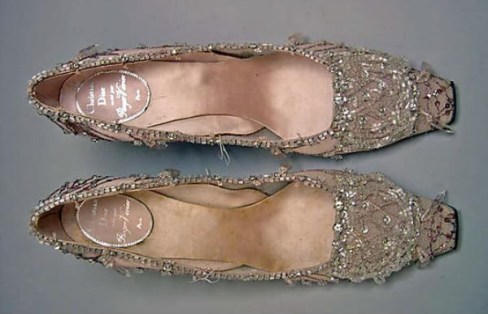



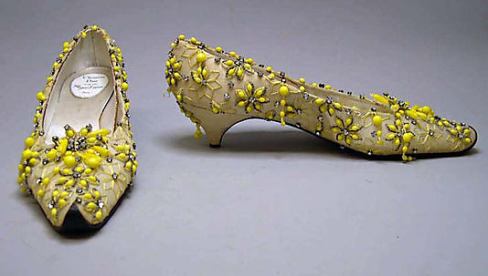













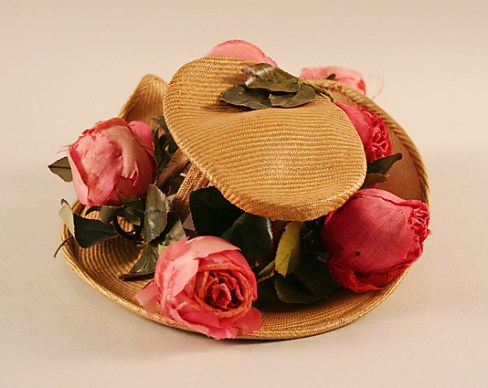
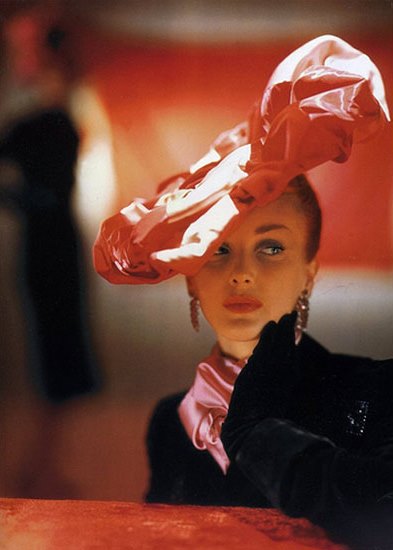











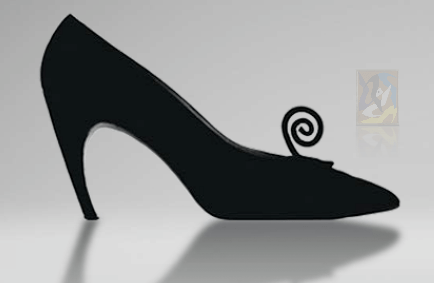






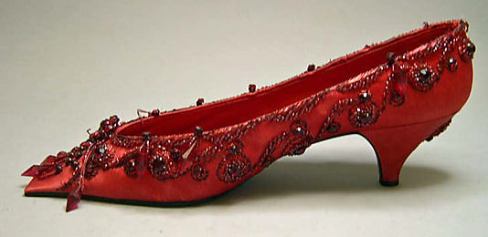
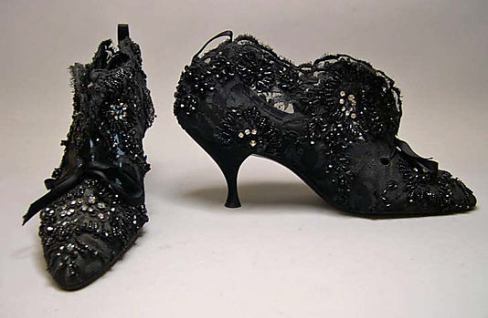
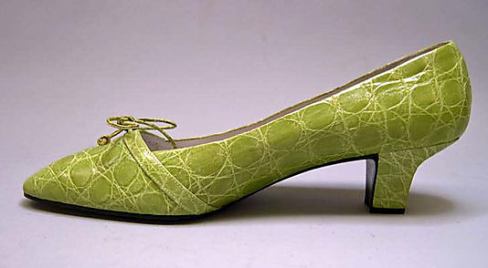




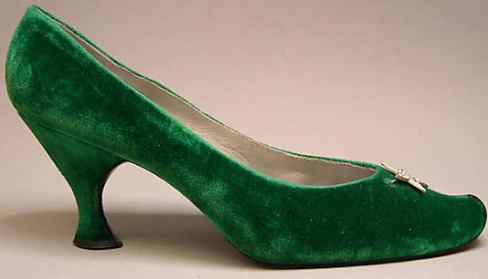

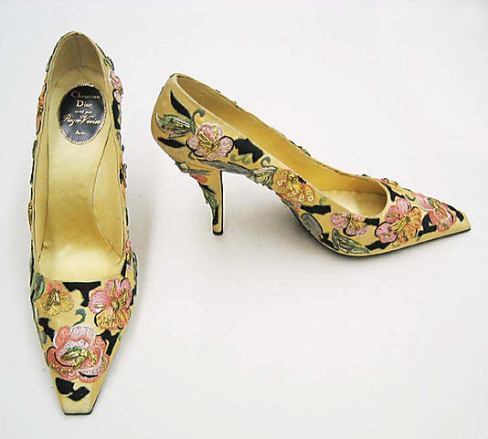



Thanks great details and enjoy the photos.
But Gérard Benoît-Vivier is the adopted son of Mr. Roger Vivier; not the other way round.
Yes, Mr. Vivier’s parents died when he was nine.
Gérard wrote a few articles on his adopted father after Mr. Roger Vivier died.
And he is also the contributor to a lot of books of Mr. Roger Vivier, if he is the guy who adopted him, he could not still alive in these days.
Here you go the reference and the news when he died:
http://www.thehistorialist.com/2012/05/heelstory-roger-vivier-at-pavillion-de.html
http://query.nytimes.com/gst/fullpage.html?res=9D06E3D6143BF93BA35753C1A96E958260
Found another mistake/misprint – should read WW11 not 1.